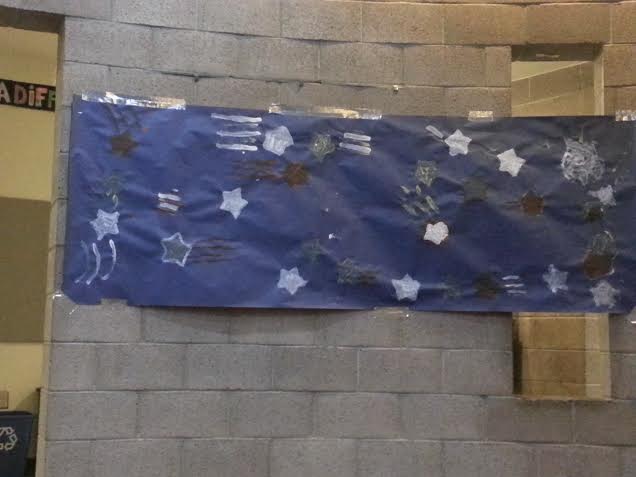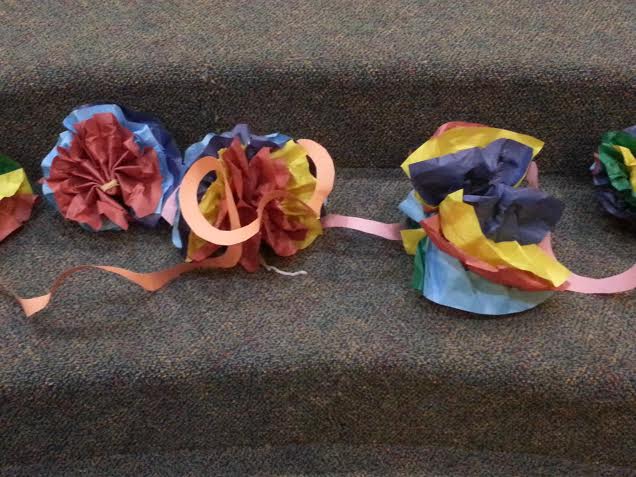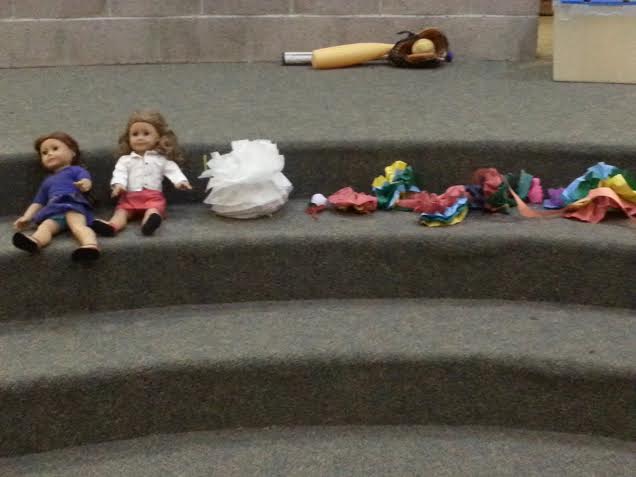The key to unlocking American Girl was understanding that I had to understand the material AND that I should let the material guide me and guide the program. And not just the material as in American Girl but the material as in the specific girl I’d chosen: Rebecca.
In reading the Rebecca books (I’m speaking here of the seven books that make up her canon, not the additional mystery titles) and really thinking about what I wanted this program to do and what it was our patrons were drawn to about it in the first place I came up with this: we want to make it an experience. We want to create an immersive experience that they can’t get anywhere else and (this part is key for me) that ties directly into the books.
With that in mind, I pulled some key elements out of Rebecca’s story.
- Rebecca is part of a large Jewish family living in New York in 1914.
- Rebecca’s family, her grandparents and her aunt, uncle and cousin, are Russian immigrants.
- American Girl describes Rebecca as “a lively girl with a dramatic flair”. She loves being the center of attention, play-acting, and staging skits.
- One of her cousins, Max, is an actor in silent film and an entire book revolves around her visiting the set of a silent film and acting as an extra.
I hope you thought of what I thought of. For me, it was clear: we were going to put on a show.
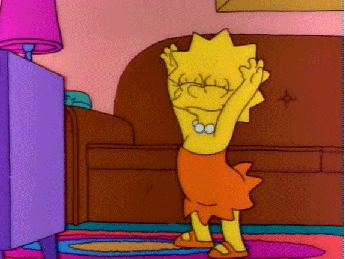
BUT MORE THAN A SHOW. We would create an experience that would let out participants really learn about Rebecca and her life. AND we would connect with our community so that they could see the things they had in common with Rebecca. These things would not only be immersive and unique but connect them deeply to the character and the entire series of books.
Over the course of six days (two of them at our branch library, the other four at our main library) we created a real experience for the kids participating – and I think it’s the sort of school-age program all libraries should try to create. Knowing the material, letting it guide us, really focusing on our vision, and keeping to a locked-down schedule helped make it much easier on staff and more fun for the participants. Here’s how we broke down those days.
The Week’s Activities
- The participants would prepare for their show by rehearsing with basic choreography two songs from Rebecca’s era (two giant hits from 1914 that are still well-known: Take Me Out to the Ballgame and Aba Daba Honeymoon). They would also create basic props and set decoration.
- In-between these activities they would learn about early cinema, life on the stage, and Rebecca’s heritage.
- Rebecca’s heritage would be covered by a community volunteer (who happened to be a retired library worker) whose direct ancestors were Russian-Jewish immigrants who lived in New York in 1914.
- Learning about early cinema was covered by a library staff member, who showed them scenes from Charlie Chaplin films and discussed silent movies with them.
- Life on the stage was covered with a field trip to our local community theater, where we got a behind the scenes look at everything from stage backdrops to costumes and props.
All of this culminated in an end of the week show performed at the library for families and friends and topped off with a cast party.
We vastly simplified the crafts but the participants didn’t really mind because through preparing for the show they still got the feeling of doing something BIG. We also made sure that the whole week and all the activities tied back to each other so that nothing felt like it was happening in a vacuum.
We started off by reading from the book Meet Rebecca. We made sure to read every day, not just from the Rebecca books but from picture books about Russian and Jewish culture too. We decided to focus on matryoshkas, Russian nesting dolls. Why? Because our volunteer (my former staff member) has a huge collection of them and she was going to bring some in as part of her visit. (again: here’s where the pre-planning and tying everything together comes in.)
Thursday & Friday
We kicked the program off with these two days held at our branch. We wanted it to be the beginning of the journey for some participants, but also stand-alone if they couldn’t make it for the whole program. (another big fix from our old days of – “Whelp, this is gonna take all week to get half-done, don’t miss once!”) The staff member conducting these two days happened to be an early cinema buff but as I pointed out in the last entry, doing your research isn’t THAT hard. We are librarians, aren’t we? We started with discussion of Rebecca and her world. T staff member (my great former colleague Ellie who went back to working for the schools, sob sob) talked to them about the whole week’s event as well, giving them a preview of sorts.
On day one there was lots of discussion of Rebecca, the era she lived in, and her heritage. That’s also when the participants began their two day project, coloring and cutting a set of paper matryoshkas. One of my student workers who is an artist drew me a set which we then photocopied together to create a reproducible folding set. (I also found a template of matryoshkas online to use with our younger group. We have a single day spin-off junior version of this program for 6-7 year olds. This year the 6-7 group made matryoshka puppets. If you don’t have an amazing artist working for you, there’s no shortage of matryoshka crafts and templates online and, as we learned last summer paying few bucks to download a template off Etsy is a great solution.) With the precise cutting and detailed coloring, it was just the right level of craft.
You can see how these patterns and cutting them would easily take two days! So, on Friday the participants returned (if they couldn’t, they just took their pattern home to finish on their own, ta-dah) to finish coloring and cutting while they heard a little bit more from Meet Rebecca. They also started their lessons about early cinema this day. Ellie showed them selections from Charlie Chaplin’s The Kid and talked about what silent cinema looked and felt like. They also got to sample egg cremes, a treat from the era (which they just hated, hah) as a treat. [If I were re-creating this program now, I would also share Matt Phelan’s amazing Bluffton, a graphic novel about young Buster Keaton and read the picture book Rifka Takes A Bow, which is about a young girl involved in Yiddish theater. If only they’d been released then!]
Monday
Monday was our 6-7 year old American Girl program. Our invention this year was to combine the two programs instead of trying to have the 6-7 year old program on an entirely different day. We also then invited the older girls to come and be our Rebecca Helpers (the way Rebecca helps her immigrant cousin Anna!) so they got another day of program and we got enthusiastic older helpers. Bingo, a multi-ages program with no extra day in the summer required. We read from Meet Rebecca and then read a picture book about matryoshkas while they crafted. As I mentioned, the younger girls made a set of matryoshka puppets. As we discovered last summer, younger kids love this craft and it really lends itself to storytelling. It can’t be easier, either. Color, cut, glue on popsicle sticks and start telling your story.
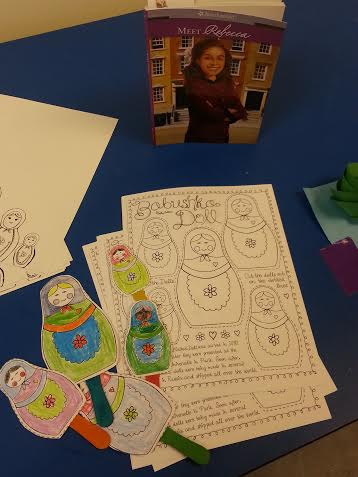
Tuesday
On Tuesday we took a field trip to the Los Alamos Little Theatre. It’s a short walk from the library and one of my friends is on their board. This was a lot of fun and not something we’d ever done before. But – see above – I wanted to reinforce that the participants had something in common with Rebecca, that they could be interested in and learn about the same things she did. The trip was a big hit and it gave me language to use for prepping for our performance. And did I mention it strengthened library and community ties, aw yeah! The participants favorite part of this was getting to stand on the stage, seeing the back-drops and DEFINITELY walking through the costumes and props room. (we also had siblings and parents come along for this part, which NEVER happens with this program: already proof it was turning into a more multi-generational program, whoo!)
Wednesday
This is the day we began learning the songs and the simple choreography. Here’s some notes Melissa, my co-collaborator on this giant project wanted to pass along about this element: We made sure the participants knew we would have the lyrics hanging up for them during the show so they didn’t have to worry about memorizing them. But we still practicing singing them together often with and without the simple dance moves we had worked out. I bought cheap karoke versions of the songs, which were easy to find on iTunes and Amazon and they provided the perfect backing tracks which helped with them learning the words. The participants were super into this, of course. We did explain that if any of them didn’t feel comfortable performing, there would still be plenty for them to do, like make the sets and props and help behind the scenes. But they liked the thought of being a group together and, of course, our enthusiasm for it helped a lot too.
We also began the work on the “sets”. Since we had been to the theater and read from Rebecca at the Movies, they already knew about these elements and were ready to create. In the scene in the book, Rebecca is in a film scene that takes place at night and has a vase of flowers, so they would be creating paper flowers and painting a night scene. They LOVED the painting, especially painting on the stars. (note their lovely work making shooting stars.) Again, such a simple craft that didn’t take ages but something that really mattered to them AND connected back to the program.
The flowers … haha … those turned out to more labor-intensive than we’d imagined. Only a few determined participants stuck around to crumple and glue and wrap the paper flowers. We also invited them to create smaller flowers with strips of paper and a thousand pounds of glue that we then hot-glued onto bobby pins. These were their “costumes” and another favor they got to take home. They liked making these smaller flowers much more (and they were much easier to create). Note how we assigned them randomly by number (they got random numbers that assigned them their flowers) to keep from fights ensuing. This also contributed to the “we’re all working on this FOR each other and TOGETHER!” element.
Thursday
This was our community member visit day. This was definitely an idea I soaked up from online sources and library trends. I wanted to, again, give a bigger picture of Rebecca’s life and context. My former co-worker Bev stopped by to talk to the participants and show them some selections from her matryoshka collection. Bev has some pretty darn cool dolls (like a Harry Potter set, for instance) and everyone LOVED them, especially since we’d spent days reading about them and crafting out own. This was another part that invited in whole families and siblings and even just people hanging out in the library!
Bev also told them about her grandparents, Russian-Jewish immigrants, and about what it was like for HER growing up a Jewish girl in New York (although not in 1914, lol!) She brought one of her menorahs and challah bread for them to snack on. She also answered questions they had and taught them a few words of Yiddish.
This was an AWESOME addition and, again, brought Rebecca to life and brought her world into OUR world. It really made me think, again, about what we were DOING with this program and this was a day I really felt these changes. Again, can’t recommend enough that if you have a chance to put a visit like this into one of your programs: DO IT, DO IT!!
We also finished up some flowers on this day and rehearsed our song and dance again, just to remind the participants that TOMORROW WAS THE SHOW and all this work was going to pay off the next day. We had created simple invitations to the PERFORMANCE and let me tell you, all our participants strutted out with them held high – ready for the show!!
Friday
THE SHOW THE SHOW THE SHOW!!! The participants arrived about half an hour before the show. First, they acted as “crew” for stage prep and helped us move furniture and hang up their backgrounds. Then they had another few rehearsals before they put on their “costumes.” (Some put the flower pins on their shirts because they had brought baseball caps for the Take Me Out to the Ballgame number – a suggestion, not requirement.)
Then they went on! And the topper of this program? We had a huge audience of families and friends. There were at least 55 people there to watch the performance. You couldn’t ask for better. Staff came out and introduced what the group had done during the week, pointed out the flowers as props and costumes and the painted backgrounds, talked about what we’d learned and created and practiced together. Then they came out and sang the songs.
The applause was wild. Many standing ovations were called for. And we topped the performance off with a classic game of the era … charades.
AND OH BOY CHARADES. Have you ever played this with a group of 8-12 year old children? Well, let me tell you – they are absolutely in love with it. They wanted to do this forever. They loved acting out for each other and trying to get the right guesses out of the crowd and having the larger audience watch and sometimes even participate a little. It, again, tied in with Rebecca’s love for playacting and the dramatic and everything we’d learned about theater and early silent cinema. ALL THE KIDS wanted to play charades, even the ones not in the program. When it was over, almost every participant asked if she could take the left-over clues home to play on their own.
Then we wrapped it all up at the cast party, we had snacks, most of them themed from the books or from Jewish traditions.
Back in the old days of American Girl we’d top off the program with a giant tea party. There were concerns that maybe there wasn’t going to enough RAZZLE-DAZZLE and special-ness without the tea party. So, after the show and before the snacks we also took a minute to call out the name of every participant and give her a chance to bow in front of the crowd. They each got a carnation with a ribbon tied to it. And let me tell you, this individual cast call was more than enough special.
Oh, and of course, there were other audience members who loved every minute of the performance and, well, were a little bit of set decoration …
What We Learned
- DON’T BE AFRAID TO START ALL OVER. Starting all over gave this program new life and new excitement. It also gave us a chance to really explore these books and many other library books too – from books about Russian life to books about putting on shows, we got circulation every day just by talking about everything we were learning and creating and daily sharing books.
- Don’t be afraid to think outside of the programming box for all-new-to-us things: a field trip to a place in our community, a speaker who came in and shared a collection and stories of her culture.
- Don’t worry about what you used to do – concentrate on what we are GOING to do.
- Remember that creating an EXPERIENCE is your ultimate goal. And that doesn’t have to involve intense, complicated crafting or staff time. We had activities as simple as gluing, coloring, and painting and it mattered more that it was part of the experience than they were making something very fancy or complicated.
Basically, we learned to NOT BE AFRAID. This was an amazing and interesting school age program that we can’t wait to recreate this summer … in a totally new way, of course! 🙂
Does your library host American Girl event? How long have you offered it? What parts change? What parts are consistently successful? Have you rebooted a program from the ground up? How did it go? What do you think about our big changes? Do you have ideas for our program? Are there any questions or details about our American Girl program I didn’t answer or that you want more info about? Let’s talk about it all! (Comment here or talk with me on Twitter)
And, as ever: GET OUT THERE AND START CHANGING!




